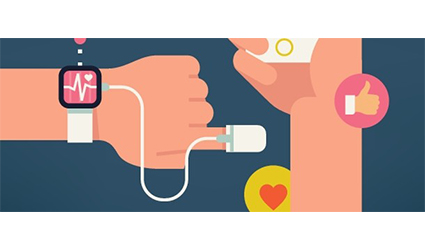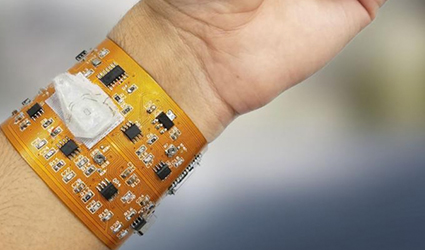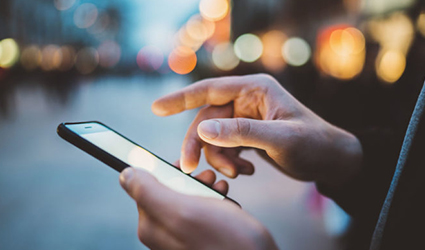Home medical equipment is safe and reliable, user-friendly and portable medical devices used outside of hospitals for the purpose of detection, treatment, health care and rehabilitation.
These devices can be divided into the following main categories: therapeutic apparatuses, detecting equipment, health care equipment and nursing rehabilitation devices. Of these the main products are far infrared therapy instruments, blood glucose detectors, massagers and household oxygen machines.
According to the latest survey from BBC Research, the global home medical equipment market is growing rapidly with its market size increasing from 17.9 billion USD in 2010 to 22.9 billion USD in 2014 at a compound growth rate of 6.7%. It is expected to reach 30 billion USD by 2018 with an annual growth rate of 2.12%, which is higher than the overall growth rate of 3.81% of the pharmaceutical market.
America, Japan, and various European countries attach great importance to the development of home medical equipment which is included in National Home Health and Care Engineering, committing to cut patient costs and make medical equipment available to those who need it.
Today, Ddu, the leading global pharmaceutical & medical device B2B online platform brings you the import and export report of home medical equipment.
I. Status quo of home medical equipment in China
The home medical equipment industry is one of the fastest growing sub-sectors in the medical devices field. With China’s developing economy and society, medical services have gradually evolved from the clinical treatment of medical institutions to a more diversified and modern multi-level medical security system which includes disease prevention, rehabilitation, and health care to introduce more medical equipment to the domestic setting.
In addition to this, the development of home medical equipment in China can also be attributed to the support of policies, changing consumer concepts and capital investments.
The market size of China's home medical equipment industry was 17.66 billion Yuan in 2011 and skyrocketed to 60 billion Yuan in 2016 with an annual compound growth rate of about 20%.
II. China mainly imports home medical equipment from the USA, Germany and Japan
Today there are an estimated 2000 companies engaged in the production and retail of home medical equipment but most of these are small-scale companies with simple products (thermometers, stethoscopes, blood pressure monitors etc.).
Home medical equipment in China is mainly imported from the USA, Germany and Japan from companies such as Roche, J&J, Omron and Medipro. According to China's customs data, products like glucometers, blood pressure monitors and hearing aids account for the largest proportion.
III. ASEAN countries are the main exporting regions
There are however some local home medical products that are gaining more and more market shares with price advantages. Most Chinese home medical equipment is exported to ASEAN countries with a small percentage being exported to the USA, Japan and Germany.
With the establishment of the China-ASEAN Free Trade Area in 2010, the import and export trade was greatly accelerated with the major products to the ASEAN countries being massagers, hearing aids and blood pressure monitors.
IV. Leading home medical equipment companies
Although the scale of most Chinese home medical equipment companies is relatively small, there are a couple of them who have gained huge success. Yu Yue Medical, Andon Health, LEADMAN, Sinocare, and EASEPAl have all made their mark in the industry over the past couple of years and have established themselves in the international market.
The Flagship product of Sinocare and EASEPAl is the glucometer. As the most important glucometer alternative supplier in China, Sinocare has implemented a “joint product offer”which is a new marketing strategy to lower the price of glucometers and promote the sale of E-test strips in order to capture the market and acquire new customers and, as a result, has become a leader in the industry with substantial sales growth.
Andon Health is involved in the business of glucometers and electronic blood pressure monitors but it mainly concentrates on iHealth, a wearable wrist electronic blood pressure monitor with a related series. The increasingly diverse iHealth product line covers blood pressure, blood sugar, weight, fetal heart rate and more, and plans to expand its product range from breathing and biochemical diagnoses. For the time being, the company seems to have a leading edge in product diversity, software development, manufacturing and brand promotion.
EASEPAL is focused on creating a large health product group and it has undergone a transformation from massage chair manufacturers to family health management medical device manufacturers. With the health data obtained from massage products they created a cloud platform, developing value-added services while carrying out the project "Prevention, Control, Diagnosis and Treatment of Respiratory Diseases New Technologies, Product Development and Industrialization". This they did alongside the Guangzhou Institute of Respiratory Diseases, developing air purifiers and auxiliary treatment instruments as well as equipment for respiratory diseases.
Yu Yue Medical is engaged in the production of sphygmomanometers, wheelchairs, blood glucose meters and oxygen machines and is the company with the most diverse product line and sophisticated sales channels.
Massage equipment is expected to become the next hot product.
Currently, China's medical model is expanding internationally, from the original therapeutic medical model to a comprehensive preventative medical model. With the new health care reform policy and Medical and Health Development Plan, Chinese home medical equipment companies see great opportunity for growth.
In recent years, traditional Chinese medical equipment has been gaining popularity in foreign and domestic markets with products such as massage chairs, massage pillows, massage tables and massage seats.
The use of massage therapy for health care and treatments is quite prevalent and widely recognized in foreign countries and so massage equipment is expected to become even more of a hot product in the foreseeable future.





